Many people believe that the bell is a wild plant, however, this is not entirely true. There are certain varieties that are used in floriculture for landscaping flower beds and lawns, and it is also grown in flower pots. Most often, growers grow the bell medium or Campanula medium L. Its history began in the 16th century in the south of Western Europe and Asia.
Bell Description
It is a biennial plant that is often grown perennial through natural renewal. Reaches a meter in height, stem straight, hard... Flowers are in the form of inverted goblets or bells with edges curved outward. They can be smooth or terry, up to 7 cm in length. The bell has a variety of colors: shades of white, blue, light blue, purple and pink.
Flowering occurs from early summer to September. When grown by seedlings, the bell will begin to bloom in the same year, if you sow directly into the ground, you will have to wait for next year: a developed root and leaf rosette will form in the first mountain, and a flowering shoot will grow on the second. Cut flowers can last up to 7-10 days.
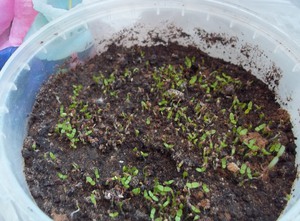 Seeds appear in August - September... They are quite small and light: there are up to 4.5 thousand seeds per gram. Many flower growers practice self-sowing: falling seeds take root in the soil and give growth to the next generation. Thus, there is no need to renew the flower bed annually.
Seeds appear in August - September... They are quite small and light: there are up to 4.5 thousand seeds per gram. Many flower growers practice self-sowing: falling seeds take root in the soil and give growth to the next generation. Thus, there is no need to renew the flower bed annually.
There are several types of medium bell varieties that are successfully grown in Russia:
- Large-flowered;
- Terry - the corolla is a series of interconnected rows;
- Crowned - corolla and calyx are of the same color;
- Variegated - differs in a variety of shades: the leaves are red, yellow and green, the flowers are usually blue and blue.
The most popular varieties include "Droplet", "Cup and saucer", "Vanilla clouds", "Pink gramophone", "Raspberry ringing" and others.
Growing features
To properly care for your bell, you need to follow a few simple rules:
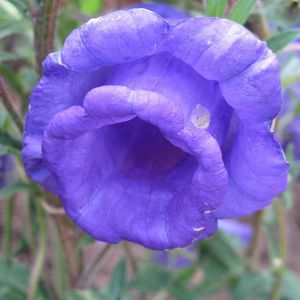 Bellflower prefers a well-humidified and sunny place, calmly tolerates coolness, but did not like extreme heat or bitter frost, also does not tolerate excess moisture.
Bellflower prefers a well-humidified and sunny place, calmly tolerates coolness, but did not like extreme heat or bitter frost, also does not tolerate excess moisture.- The plant prefers light and nutritious soil with a neutral acidity level. The soil should be well moistened, but you don't need to overdo it, otherwise the seeds will rot. Flowers will not grow on clay or loamy soils, as they are too heavy.
- Moderate watering is necessary during drought., you also need to regularly loosen the ground and cut off dry flowers.
- It is recommended to fertilize it with rotted manure before planting., leafy humus or turf. Fresh manure will not work: it can cause the development of fungal diseases.
- When growing bells for two years in the first year, it is necessary to prune leaves near the ground and cover them with a layer of foliage or peat (about 10–12 cm) for protection. The next year, nitrogenous fertilizers (ammonium nitrate or urea) are introduced into the soil, and when buds begin to appear, they are additionally fed with minerals.
Growing from seeds
The easiest way to plant bells is to plant them directly in open ground, but then the flowers will appear only next year.Most flower growers prefer to grow seedlings, which are then transferred to flower beds.
- Growing seedlings will require small greenhouses or seedling boxes. They are filled with a mixture of 6 parts turf, 3 parts leaves and 1 part sand. The mixture must be carefully moved so that the earth is free of lumps. Before planting the bell, it is watered.
- Seeds are planted at the end of October or in March - April to get flowers this year. A later beginning will prevent them from forming. In this case, you can use the collected seeds from last year's flowers. They must be scattered over the surface, without falling asleep from above, and lightly pressed or sprinkled with fine sand.
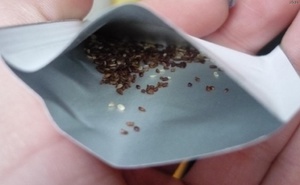 Then the seedlings are covered with cellophane to obtain a greenhouse effect, and put away in a dark place or shaded with a cloth. This point must be followed: unlike other flowers, bells do not grow in the light. In this case, an inflow of fresh air and a temperature of at least +20 degrees are required.
Then the seedlings are covered with cellophane to obtain a greenhouse effect, and put away in a dark place or shaded with a cloth. This point must be followed: unlike other flowers, bells do not grow in the light. In this case, an inflow of fresh air and a temperature of at least +20 degrees are required.- After about half a month, the first shoots will begin to appear. They must be regularly moistened with a spray bottle, the dark cloth can be removed.
- For the next two weeks, the seedlings will slowly grow and get stronger. Only after that it will be possible to pick them up.
- The sprouts dive at a distance of 10-15 cm from each other, after which they are again removed into the dark for 7-10 days for final engraftment.
- Bells are planted in open ground in early summer, along with the land on which they grew before. The distance between the bushes should be at least 30 cm. To protect mature plants from the wind, you can tie them to sufficiently high pegs.
If you plant seeds in early May, you will have to transplant them into open ground only at the end of August.
Cuttings
One of the ways to propagate bells is by cuttings. Cuttings are cut for the second spring... A cutting with trimmed leaves is transplanted into a wet soil so that two internodes remain on the surface. Then it is also covered with a film to create a greenhouse effect.

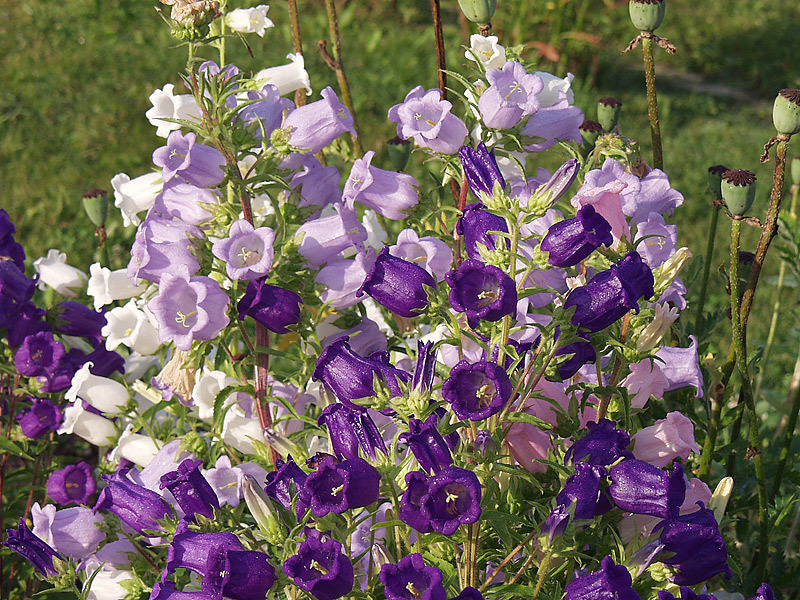

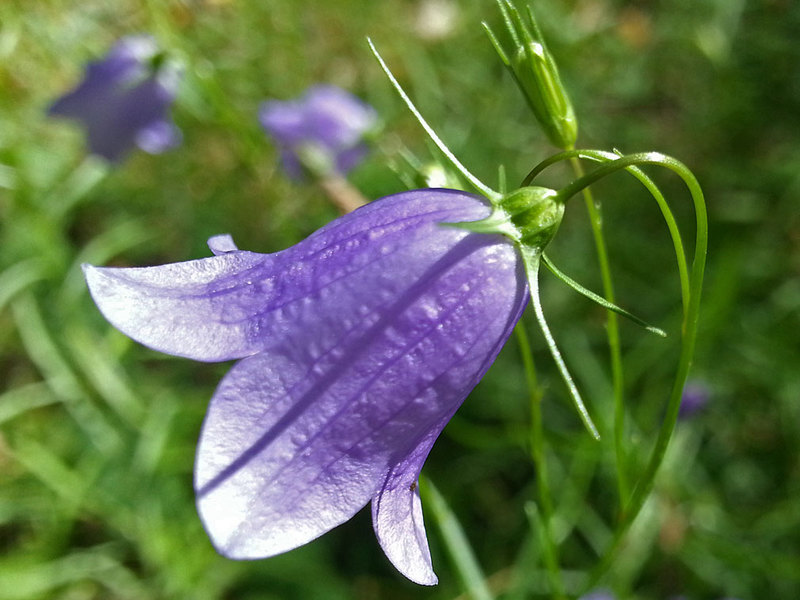
Features of some types of bells
Below are brief descriptions of some kinds of bell average, which can be found in summer cottages.
- Carpathian bell... This undemanding, low plant tolerates heat and dryness well, but requires regular weeding of the soil. Blooms profusely all summer. To stimulate flowering, it is recommended to regularly prune faded shoots and remove dried flowers. Before the winter cold, you must completely cut the stem. The disadvantages of the variety include fragility: every 2-3 years the plant dies off completely, and therefore the flower bed has to be sown again.
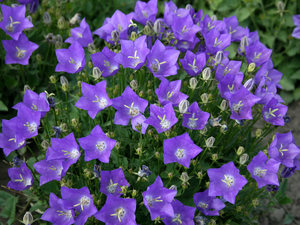 Bell peach... The variety easily tolerates sun and shade, can grow even on clay soils, but requires regular loosening. Like the Carpathian variety, it disappears after 2-3 years and requires regular renewal. Propagated by seeds, cuttings or roots.
Bell peach... The variety easily tolerates sun and shade, can grow even on clay soils, but requires regular loosening. Like the Carpathian variety, it disappears after 2-3 years and requires regular renewal. Propagated by seeds, cuttings or roots.- Crowded bell... Despite its small growth (the flower grows up to 50-60 cm), this perennial species is unpretentious. It perfectly tolerates drought, shade and poor soil, requires regular loosening and renewal every 3-5 years. Varietal bells reproduce by cuttings, wild ones - with the help of seeds.
- Point bell... The plant stretches up to 70 cm, loves shade and moisture. Natural varieties easily fill all the free space. For their fencing it is necessary to use small fences. Flowering occurs in early summer, after which the bell retires. It takes root almost at any time of the year.
Output
A bell is a capricious plant that can become a real decoration of a plot or a bouquet. It looks good in the same flower bed with perennial plants or alone.
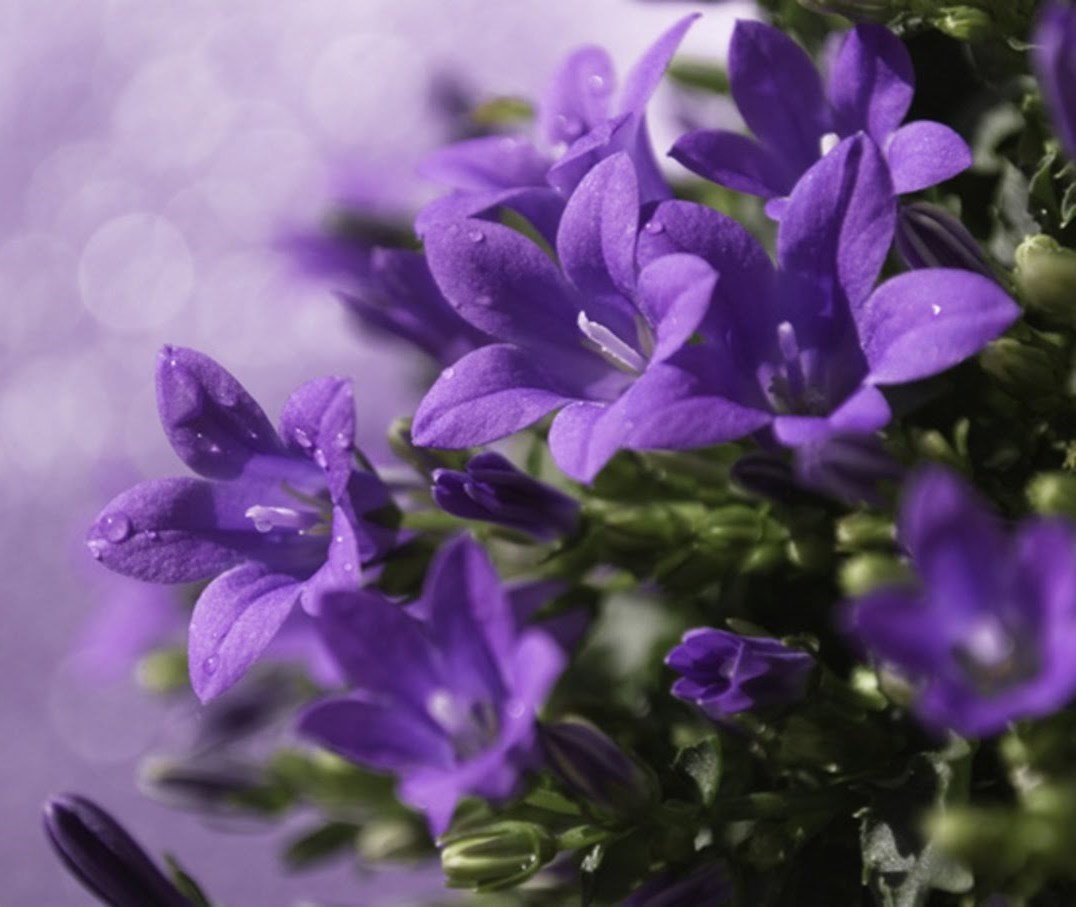
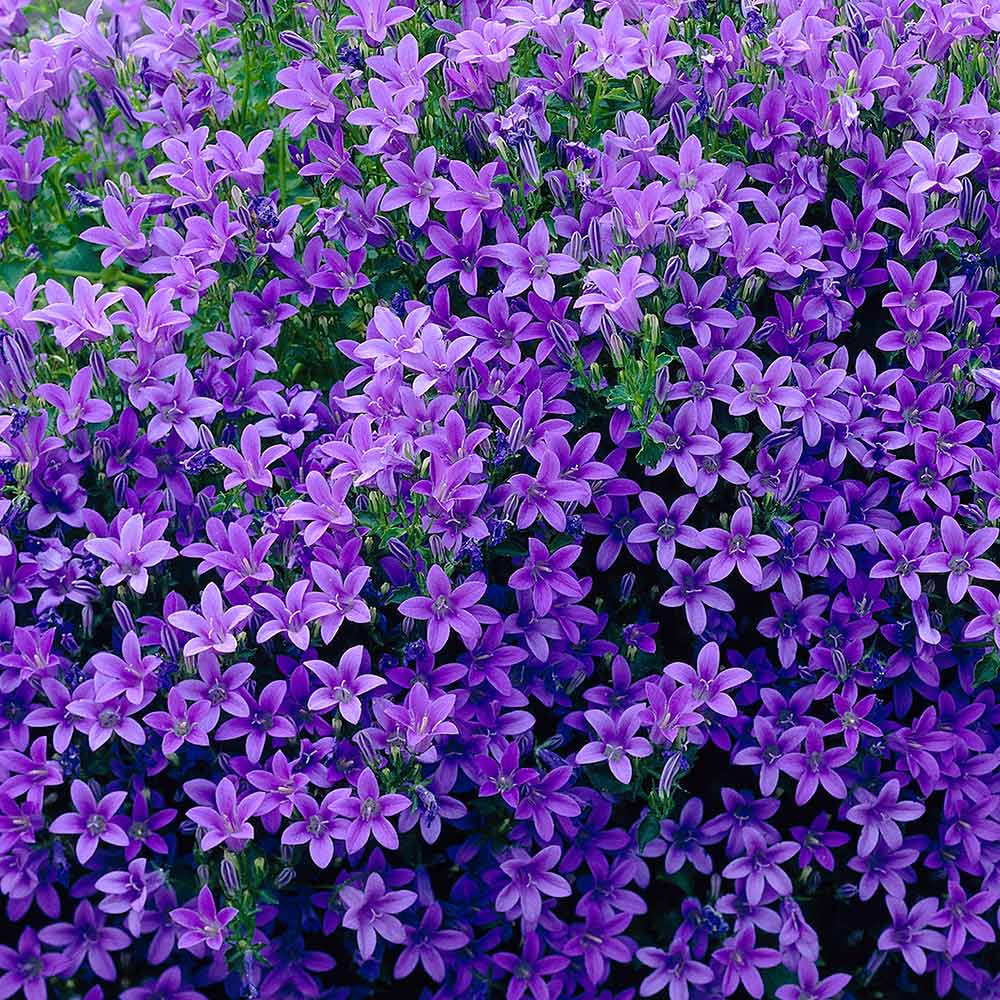
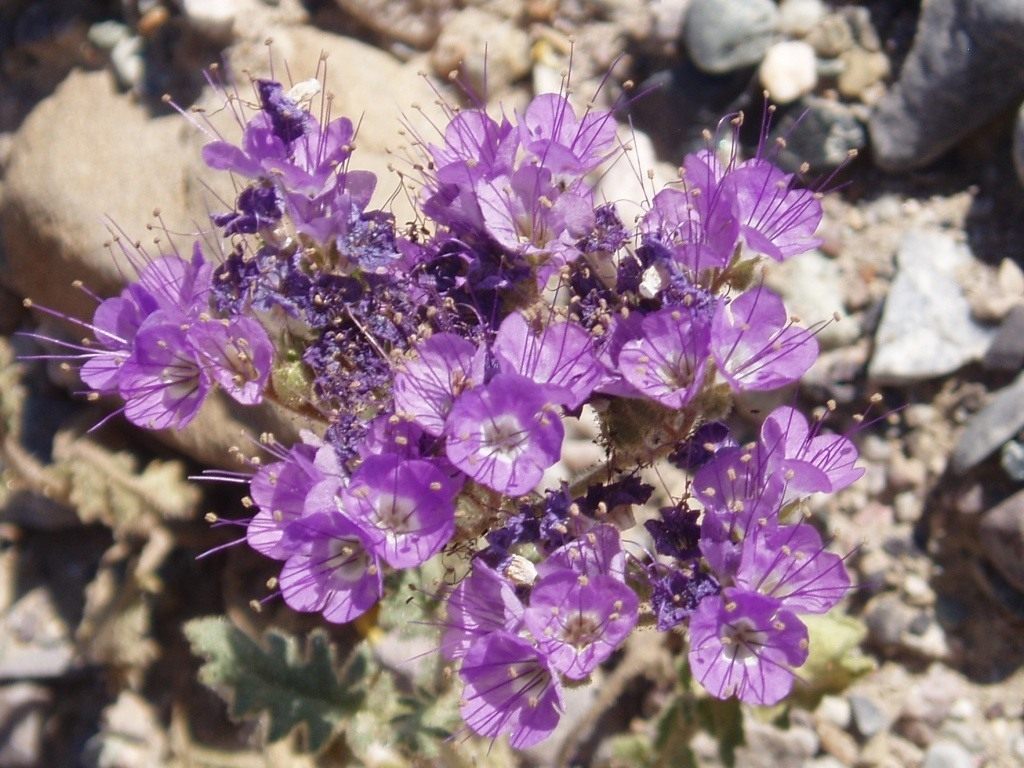
2 comments